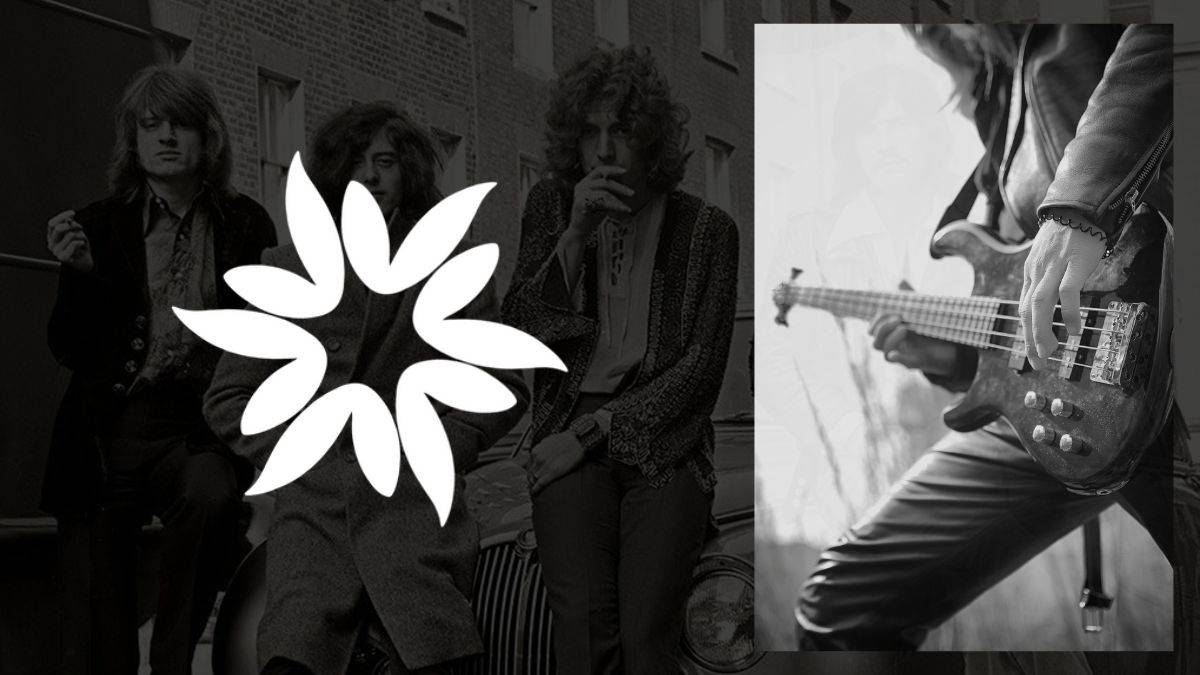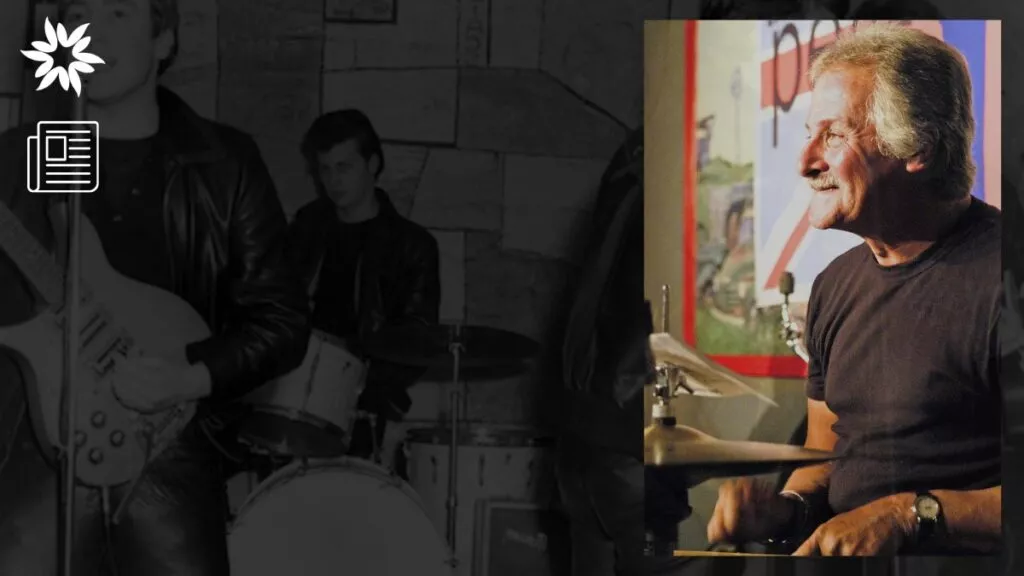The 1970s was a golden era for rock music, witnessing the rise of numerous iconic bands that have left an indelible mark on the music industry.
Building on the foundations laid in the 1950s and 1960s, this decade was characterized by a diverse range of rock genres, from heavy metal and punk to progressive and glam rock.
Key Takeaways
- The 1970s was a transformative decade for rock music, introducing a diverse range of sounds and styles.
- Iconic bands like Led Zeppelin, Queen, and AC/DC set new standards with their innovative music and powerful performances.
- The influence of these bands extends far beyond the 70s, continuing to shape rock music and inspire new generations of artists.
1. Led Zeppelin
Formed in 1968, Led Zeppelin is often regarded as one of the greatest rock bands of all time. Their blend of hard rock, blues, and folk music set a new standard in the industry.
Albums like Led Zeppelin IV (1971) and songs such as “Stairway to Heaven” became monumental hits. The band’s innovative approach and powerful performances helped define the sound of the 70s.
They were known for their heavy, guitar-driven sound and elaborate live shows, often including lengthy improvisations. The band’s influence extended far beyond their active years, shaping the direction of rock music for decades to come.
2. Pink Floyd
Pink Floyd became famous for their complex live shows and themed albums, changing the face of progressive rock.
Albums like The Dark Side of the Moon (1973) and The Wall (1979) are considered masterpieces. Their music often explored deep philosophical themes combined with groundbreaking studio techniques.
The band’s ability to create a unique auditory experience through their use of synthesizers, sound effects, and multi-tracked recordings made them a standout act in the 70s.
Their live performances were also renowned for using visual effects and stage props, creating an immersive experience for their audiences.
3. Queen
Queen, led by the flamboyant Freddie Mercury, became known for their eclectic style and theatrical performances.
Their 1975 album A Night at the Opera featured the legendary track “Bohemian Rhapsody.” Queen’s ability to blend rock with other genres like opera and vaudeville made them a unique presence in the rock scene.
The band’s energetic performances and Mercury’s strong voice made them popular with fans. Most of their songs were known for being varied and complex, from hard rock songs to gentle ballads, making them one of the most adaptable bands of their time.
4. The Rolling Stones
Though they began in the 60s, The Rolling Stones continued to dominate the 70s with albums like Sticky Fingers (1971) and Exile on Main St. (1972).
Known for their energetic live performances and blues-influenced rock, they remain one of the best-selling music artists of all time.
The band’s raw, gritty sound and rebellious image resonated with a wide audience, making them one of the most enduring acts in rock history.
Their ability to evolve with the times while staying true to their blues roots kept them relevant throughout the decade.
5. The Eagles
The Eagles epitomized the laid-back California sound with hit albums like Hotel California (1976) and Eagles (1972).
This band’s smooth harmonies and blend of rock, country, and folk elements earned them massive commercial success and a lasting legacy.
The Eagle’s music often reflected the lifestyle and culture of Southern California, making them a defining act of the 70s.
Their meticulous attention to musical detail and rich vocal harmonies set them apart from their contemporaries, ensuring their music’s longevity.
6. Aerosmith
Aerosmith emerged from the Boston music scene with a gritty blues-rock sound. Hits like “Dream On” and “Sweet Emotion” from their mid-70s albums helped them gain a massive following.
They became known for their high-energy performances and the charismatic presence of frontman Steven Tyler.
The band’s hard-driving sound and Tyler’s distinctive voice made them a major force in rock music. Their ability to combine raw rock energy with catchy melodies made their music widely appealing, securing their place in rock history.
7. Fleetwood Mac
Originally a blues band, Fleetwood Mac transformed in the mid-70s with the addition of Stevie Nicks and Lindsey Buckingham.
Their 1977 album Rumours became one of the best-selling albums of all time, featuring classics like “Go Your Own Way” and “Dreams.” The band’s shift towards a more pop-oriented rock sound broadened their appeal and brought them commercial success.
Personal tensions and emotional turmoil within the band during the making of Rumours added a raw authenticity to their music, resonating deeply with listeners.
8. AC/DC
Formed in Australia in 1973, AC/DC brought a raw, electric sound to rock music. Their 1979 album Highway to Hell and tracks like “Back in Black” showcased their high-energy rock anthems and solidified their place in rock history.
Known for their straightforward, no-frills approach to rock, AC/DC’s music was characterized by powerful guitar riffs and infectious rhythms.
The band’s relentless touring and electrifying live shows helped build a loyal fan base, making them one of the most enduring acts in rock music.
9. Black Sabbath
Black Sabbath’s “The Dark” is often credited with pioneering heavy metal, and heavy sound sets them apart.
Their early 70s albums, including Paranoid (1970) and Master of Reality (1971), introduced the world to a new, heavier form of rock music. The band’s use of down-tuned guitars, ominous lyrics, and dark imagery created a blueprint for heavy metal.
Most of their music addressed themes of doom, fear, and the occult, which was very different from the more cheerful themes of other rock bands at the time.
10. The Clash
As one of the defining punk rock bands, The Clash combined raw energy with political and social commentary.
Their 1979 album London Calling is considered one of the greatest albums of all time, featuring a blend of punk, reggae, and rockabilly.
The band’s music often addressed social and political issues, giving a voice to the disaffected youth of the era.
Their willingness to experiment with different musical styles and commitment to activism set them apart from other punk bands, making them a lasting influence in rock music.
11. Lynyrd Skynyrd
Synonymous with Southern rock, Lynyrd Skynyrd’s hits like “Sweet Home Alabama” and “Free Bird” became anthems of the genre. Formed in 1964, the band gained national fame in the early 70s with their distinctive triple guitar attack and heartfelt lyrics.
They released their debut album, (Pronounced ‘Lĕh-‘nérd ‘Skin-‘nérd), in 1973, which included “Free Bird.” Their music is characterized by a blend of blues, country, and rock.
Despite a tragic plane crash in 1977 that took the lives of several members, including lead singer Ronnie Van Zant, their music continues to resonate with fans worldwide.
The band reformed in the late 80s with Van Zant’s brother, Johnny, as the lead singer, and they continue to tour and record today.
12. Yes
Yes was a leading force in progressive rock, known for their complex compositions and virtuosic musicianship.
Formed in 1968, the band released influential albums like Fragile (1971) and Close to the Edge (1972), which featured detailed arrangements and ambitious themes.
Their music often included extended instrumental passages, complex time signatures, and elaborate stage sets.
Songs like “Roundabout” and “Heart of the Sunrise” showed off their technical skill and new ideas in rock music. The band has had many member changes over the years, but they are still known as pioneers of progressive rock.
13. Ramones
The Ramones were important in the development of punk rock. With their fast, stripped-down sound and catchy melodies, they released influential albums like Ramones (1976) and Rocket to Russia (1977).
Unlike the complicated rock music at the time, their music was straightforward and energetic. Songs like “Blitzkrieg Bop” and “Sheena Is a Punk Rocker” became punk anthems.
Their music was raw and unpretentious, and their profound influence on the punk movement inspired countless bands and musicians.
14. The Who
The Who continued their success from the 60s into the 70s with rock operas like “Tommy” (1969) and “Quadrophenia” (1973).
Known for their powerful live performances, the band was also responsible for some of the most anthemic songs of the era, including “Baba O’Riley” and “Won’t Get Fooled Again.”
Their music often addressed themes of rebellion and social change, resonating with the youth of the time.
The Who’s explosive live shows, featuring Pete Townshend’s windmill guitar playing and Keith Moon’s frenetic drumming, set a new standard for rock performances.
15. David Bowie
Though primarily known as a solo artist, David Bowie’s work in the 70s, particularly with his band The Spiders from Mars, was groundbreaking.
Albums like The Rise and Fall of Ziggy Stardust and the Spiders from Mars (1972) showcased his ability to blend rock with theatrical elements and other genres.
Bowie’s alter ego, Ziggy Stardust, became an icon of glam rock, with flamboyant costumes and a bold stage presence.
His music in the 70s, including hits like “Space Oddity” and “Heroes,” pushed the boundaries of rock and pop, influencing a wide range of artists and genres.
16. Santana
Led by the virtuoso guitarist Carlos Santana, the band Santana fused rock with Latin music.
Their performance at Woodstock in 1969 brought them widespread recognition, and subsequent albums like Abraxas (1970) brought Latin rock to mainstream audiences.
Hits like “Black Magic Woman” and “Oye Como Va” showcased their unique blend of rock, blues, and Latin rhythms. Santana’s fluid guitar playing and the band’s infectious grooves made them stand out in the 70s and beyond.
17. Kiss
Known for their theatrical live shows and makeup, Kiss became one of the most popular bands of the 70s. Formed in 1973, their high-energy performances and stage personas, including the iconic face paint and costumes, set them apart.
Songs like “Rock and Roll All Nite” and “Detroit Rock City” became rock anthems. The band’s commercial success was bolstered by a dedicated fan base known as the “Kiss Army.”
Their image and stage presence were as influential as their music, making them a cultural phenomenon.
18. Deep Purple
Pioneers of hard rock and heavy metal, Deep Purple’s hits, such as “Smoke on the Water” and “Highway Star,” remain staples of rock music.
Formed in 1968, the band’s virtuosic musicianship and powerful performances left a lasting impact on the genre.
Albums like Machine Head (1972) showcased their heavy, riff-driven sound and technical skill. Although the band’s lineup has changed multiple times over the years, its influence on rock and metal is undeniable.
19. Judas Priest
As one of the leading bands in the heavy metal genre, Judas Priest’s twin guitar attack and operatic vocals set a new standard.
Formed in 1969, their early albums, Sad Wings of Destiny (1976) and British Steel (1980), are considered classics.
The band’s aggressive sound and leather-and-studs image helped define the look and sound of heavy metal.
Songs like “Breaking the Law” and “Living After Midnight” became anthems of the genre, and their influence can be seen in many metal bands that followed.
20. The Beach Boys
Although their peak was in the 60s, The Beach Boys continued to produce hits in the 70s with albums like Sunflower (1970) and Surf’s Up (1971).
Their harmonies and innovative production techniques influenced countless musicians. The band’s ability to evolve its sound while maintaining its signature harmonies helped The Beach Boys stay relevant.
Despite internal conflicts and a changing musical landscape, The Beach Boys’ music from the 70s remains an integral part of their legacy.
Rock On: Celebrate the Legacy of These Iconic 70s Rock Bands!
There’s never been a better and easier time to explore the vibrant history of 70s rock. Thanks to the wonders of the internet, music fans can listen to these iconic albums, watch classic live performances, and discover the stories behind the songs that define a generation.
Revisit your favorite bands or discover new ones from this golden rock era. Share the experience with friends and family, and keep the spirit of 70s rock alive.
Let the music move you, inspire you, and remind you of the power of rock and roll.









